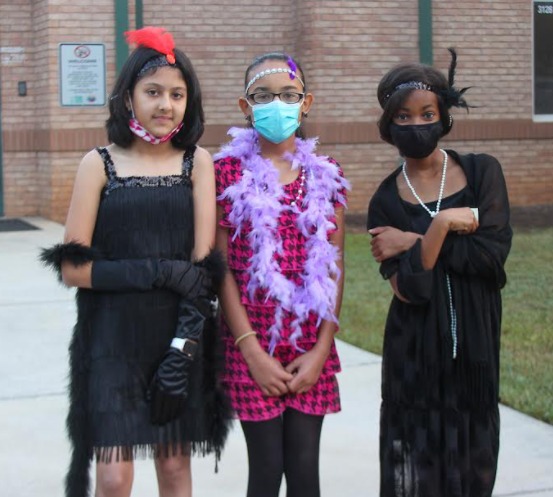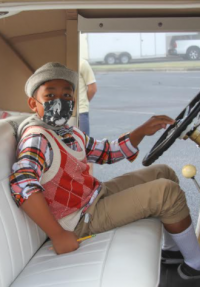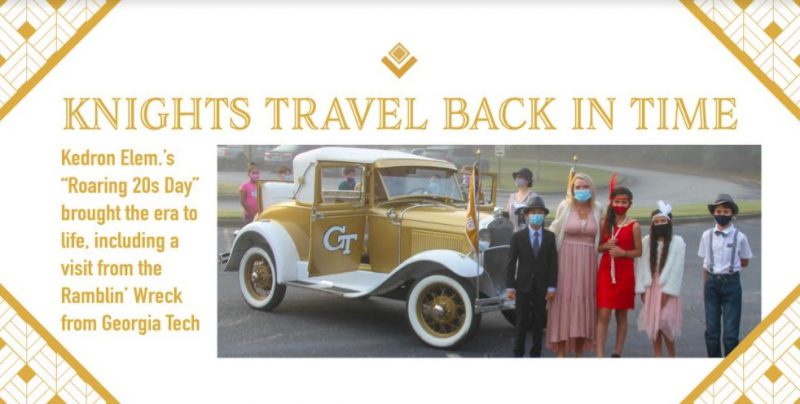Kedron Elementary had a roaring good time taking a trip back to the 1920s. The 5th grade Knights celebrated “Roaring 20s Day,” an immersive experience to help the students study the bygone era.
With many students and teachers dressed in their best 1920s-style clothing, there was a full slate of activities to enjoy. They learned to dance the Charleston and listened to Jazz music by Duke Ellington and Louis Armstrong. Students watched Walt Disney’s first animated picture “Steam Boat Willie,” a new form of animation for the decade, before creating their own draft for an animation.
Flapjacks were popular during the era, so they talked about the physical and chemical changes pancake mix goes through when heat is applied. They also created Model T candy cars through assembly lines to show how specialization increases productivity.
Classes used rationing books to emphasize scarcity and how supplies were rationed during WWI and WWII to ensure soldiers received adequate supplies.
The Fayette County Historical Society sent a slideshow of World War One veterans. Students studied what it was like for soldiers to be in the trenches during WWI and how the horrors soldiers witnessed affected how they viewed life when they returned. People wanted to live in the moment at the end of WWI and live a life of leisure during the 1920s. They wrote thank you cards to veterans that will be sent out on Veterans Day.
They also got to visit the Ramblin’ Wreck, a Ford Model A Sport coupe that serves as Georgia Tech’s official student body mascot. Georgia Tech students explained the assembly line, how cars were less expensive in the 20s due to mass production, and all the industrial improvements that were made from the Model T in the 20s to the Model A in the 30s. The lucky Kedron students were allowed to explore the Ramblin’ Wreck inside and out!
For teacher Lindsay Darr, the teachers hope the day offers the students a whole new perspective on life.
“We hope students gained a deeper understanding of life in the 1920s and how our past experiences and cultural developments can leave a lasting impact on society.”















Leave a Comment
You must be logged in to post a comment.